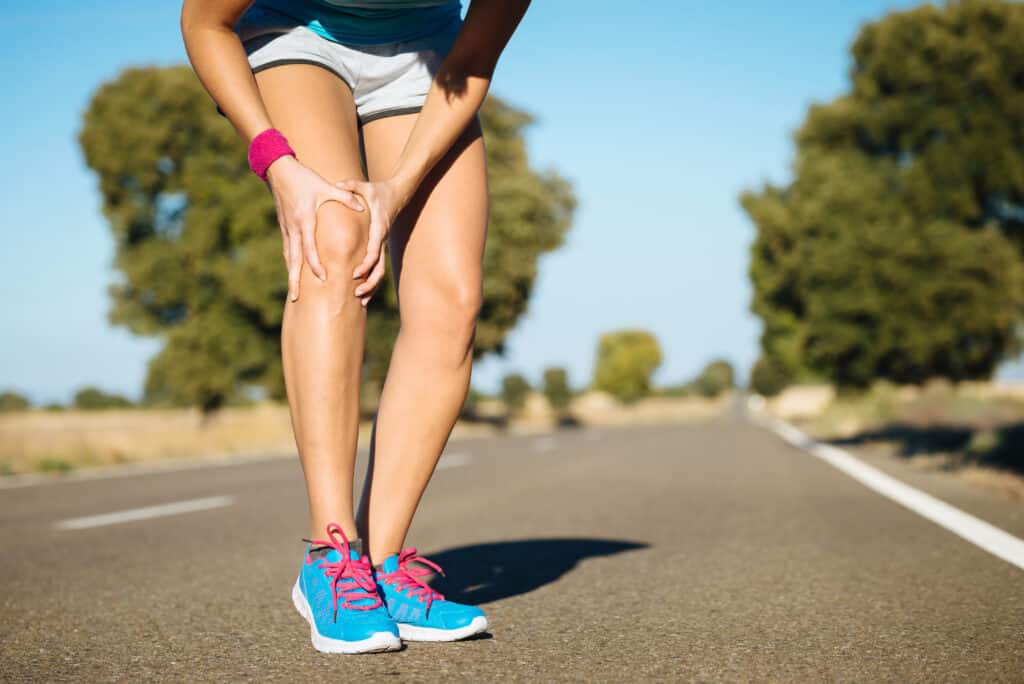Knee pain can be a formidable obstacle to maintaining an active and fulfilling life.
Whether you’re an athlete, a fitness enthusiast, or simply enjoy a leisurely stroll, knee pain can significantly impact your daily routine. As an orthopedic knee specialist with over 30 years of experience treating knee conditions, I’ve encountered many cases where knee pain was caused by various factors. In this article, we’ll delve into five of the most common causes of knee pain and shed light on how to manage and prevent them.
1. Osteoarthritis: The Wear-and-Tear Culprit
Osteoarthritis, often referred to as “wear-and-tear arthritis,” is a degenerative joint disease that commonly affects the knees. Over time, the protective cartilage that cushions the knee joint begins to break down, resulting in pain, swelling, and stiffness. As the condition progresses, patients may experience a decreased range of motion and even difficulty bearing weight.
Managing osteoarthritis involves a multi-faceted approach. Low-impact exercises like swimming or cycling can help maintain joint flexibility without putting excessive strain on the knees. Weight management is crucial, as excess weight stresses the knee joints. Nonsteroidal anti-inflammatory drugs (NSAIDs) and physical therapy can provide relief, and in more severe cases, minimally invasive surgical interventions like arthroscopy or knee replacement may be considered.
2. Ligament Injuries: A Twist of Fate
Ligaments are tough, flexible bands of tissue that connect bones and provide stability to joints. Injuries to the anterior cruciate ligament (ACL) and medial collateral ligament (MCL) are among the most common causes of knee pain, often occurring during sports or activities that involve sudden changes in direction or direct impact.
Depending on the severity of the injury, treatment can range from rest, ice, compression, and elevation (RICE) to physical therapy and bracing. In cases where the ligament is completely torn, and functional stability is compromised, surgical reconstruction may be necessary to restore knee stability and function.
3. Meniscus Tears: A Common Culprit of Knee Pain
The menisci are C-shaped pieces of cartilage that act as shock absorbers between the femur and tibia in the knee joint. A sudden twist or forceful rotation of the knee can lead to meniscus tears, causing pain, swelling, and limited mobility. These tears can be classified as “simple” or “complex,” and treatment approaches vary accordingly.
Simple tears often respond well to conservative treatments such as rest, ice, and physical therapy. Complex tears, however, might require arthroscopic surgery to trim or repair the torn meniscus. Early diagnosis and appropriate management are crucial to prevent long-term complications like chronic pain and cartilage damage.
4. Patellofemoral Pain Syndrome: The Misaligned Patella
Also known as “runner’s knee,” patellofemoral pain syndrome (PFPS) is characterized by pain around or behind the kneecap, exacerbated by activities that involve bending the knee. It often arises from improper tracking of the patella within the femoral groove, leading to friction and irritation.
Treatment of PFPS typically involves identifying and addressing underlying biomechanical issues through physical therapy and targeted exercises that strengthen the muscles supporting the knee. Rest and NSAIDs can help alleviate symptoms, and orthotics or bracing may be recommended to aid proper patellar alignment during physical activities.
5. Bursitis: When Inflammation Strikes
Bursae are fluid-filled sacs that cushion the areas where tendons and muscles glide over bone. When these sacs become inflamed due to overuse, trauma, or infection, a condition known as bursitis develops. Knee bursitis leads to localized pain, tenderness, and swelling, limiting movement and flexibility.
Treatment involves resting the affected knee, applying ice, and taking anti-inflammatory medications to reduce swelling and pain. Physical therapy can help improve muscle strength and flexibility around the knee joint, preventing further irritation. In some cases, fluid drainage or corticosteroid injections may be recommended to alleviate symptoms.
Prevention
While these five causes of knee pain are among the most common, it’s important to note that individual cases can vary significantly. Preventive measures play a pivotal role in maintaining knee health. Regular low-impact exercise, maintaining a healthy weight, using proper techniques during physical activities, and listening to your body’s signals are all integral to knee pain prevention.
If knee pain persists or worsens, seeking professional medical advice is imperative. An accurate diagnosis, combined with a tailored treatment plan, can help you regain mobility and live a pain-free life. Remember, each knee is unique, and understanding the causes and appropriate management of knee pain is a crucial step towards maintaining your overall well-being.

